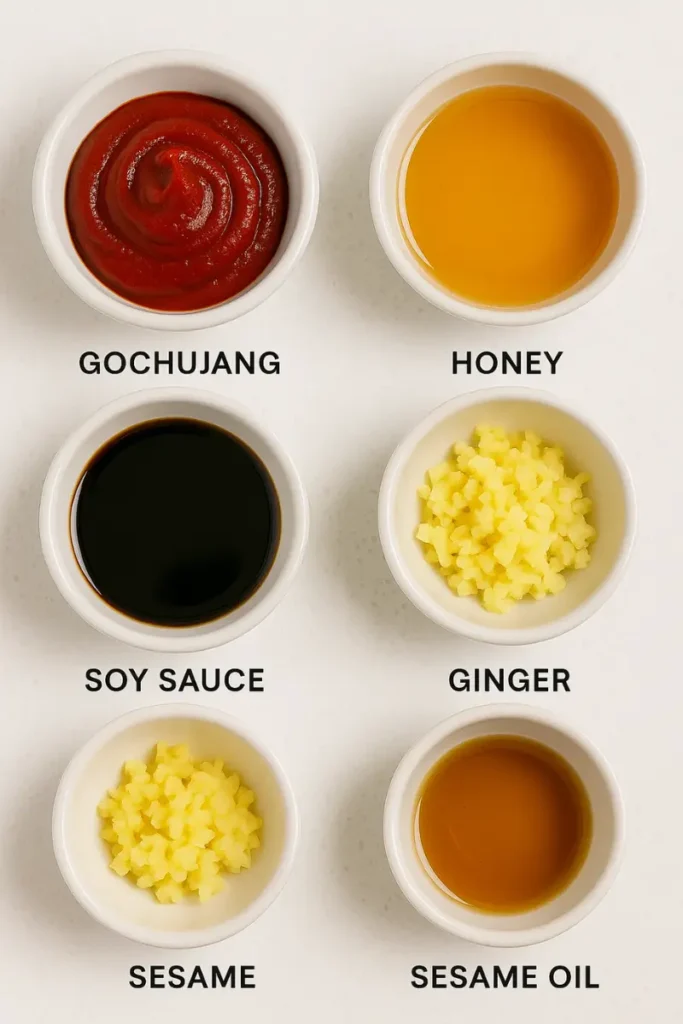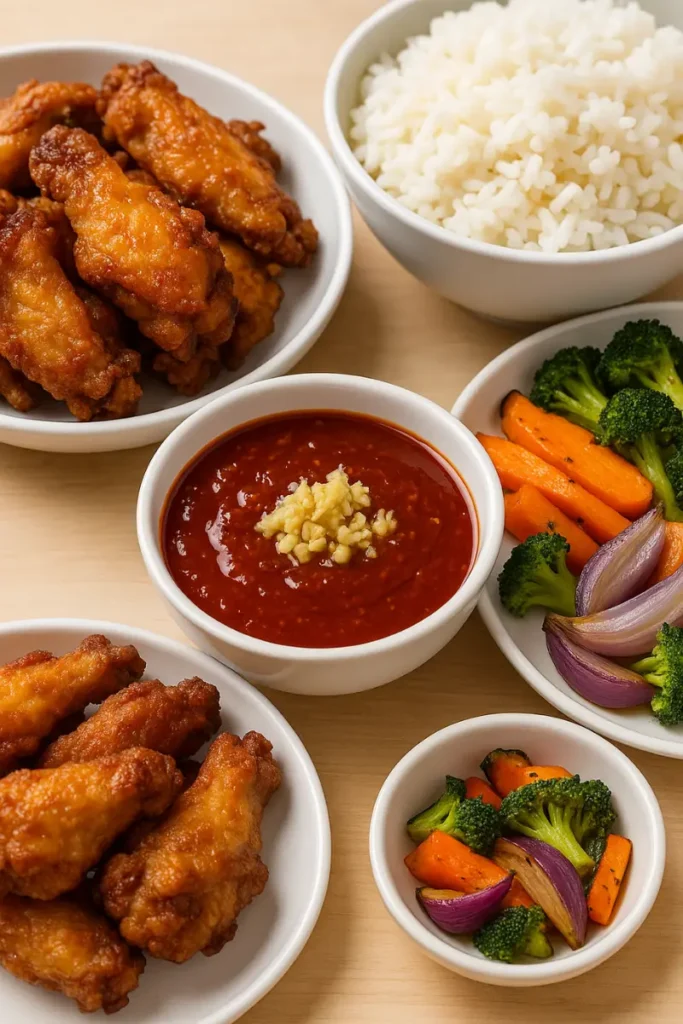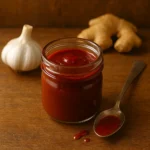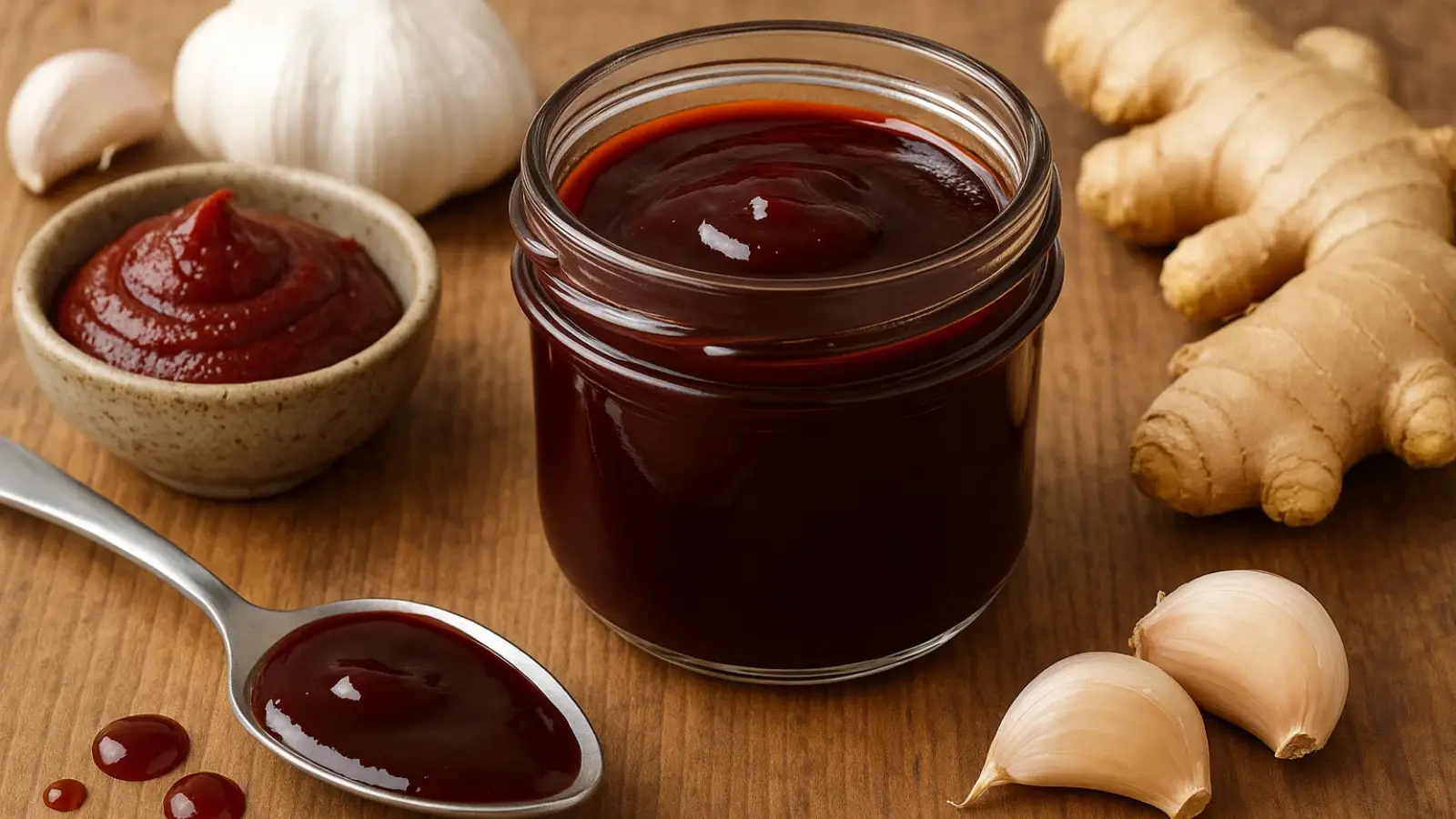Swicy sauce recipe—that’s the flavor I chased after one unforgettable bite in Austin. Sweet, spicy, sticky, and bold, it reminded me of the first time I “fixed” a ruined marinara with my mom as a kid. That moment sparked my obsession with sauce, and swicy was a flavor I had to master. After late-night experiments and way too many taste tests, I’ve landed on the perfect version. In this post, I’ll walk you through making swicy sauce at home—from simple ingredients to brilliant pairings. If you love sauces with attitude, you’re going to want this one on repeat.
Table of Contents
Why this swicy sauce recipe means something
This isn’t just another sauce I threw together. It’s the one I go back to when I need comfort. Or boldness. Or something with teeth.
It’s not just sauce—it’s a feeling. Like mango habanero but deeper. Like boom boom sauce but moodier.
Every spoonful of this swicy sauce recipe carries a bit of my story. That’s why it works. Not because it’s perfect—but because it’s mine.
Swicy Sauce Recipe (How I Throw It Together Most Days)
Ingredients:
- About 3 tablespoons gochujang
- 2 tablespoons honey—or brown sugar if that’s what’s on hand
- A good splash of soy sauce (or gluten-free soy sauce if needed)
- 1 tablespoon rice vinegar (lime juice works too)
- 1 garlic clove, minced—or a dash of garlic powder
- A drizzle of sesame oil
- Optional:
– A pinch of gochugaru, cayenne, or a squirt of sriracha
– A spoonful of jam (peach, apricot, even marmalade works)

How I do it:
- I just throw everything into a small pot. No measuring cups if I’m feeling bold.
- Low heat. Stir gently. It doesn’t need to boil—just get glossy and smooth.
- I taste it right away. Sometimes I add more sweet, sometimes more heat. It depends on what I’m making it for.
- Once it’s where I want it, I turn off the heat. Let it sit for a few.
- I use it warm—or stash it in a jar in the fridge. It lasts a week, though mine never makes it that long.
Notes:
- This swicy sauce recipe isn’t rigid. Feel free to tweak it.
- No gochujang? Mix miso, chili flakes, and honey. Different, but still good.
- Once, I swirled this into alabama white sauce for grilled chicken—wasn’t planned, but it worked.
PART 3: Serving Ideas & Creative Uses for Swicy Sauce
How this swicy sauce recipe took over my meals
I originally came up with this swicy sauce recipe for wings. Just wings. But once it was made, I kept dipping into the jar for everything else. I didn’t expect that.
A few days later, I roasted sweet potatoes and tossed them while hot in a spoonful of swicy sauce. It clung to the crispy edges and turned them into something way better than just roasted veg.
I also stirred it into sour cream. It wasn’t a planned move—I had leftover carrots and wanted something tangy to dunk them in. The sweet heat against the creamy base just worked. That’s when I realized this swicy sauce recipe wasn’t just for chicken anymore.
Sometimes, I add it to hot rice with a fried egg and scallions. It’s fast. Satisfying. The kind of thing I crave when I’m tired but still want food that makes sense.

Where the swicy magic really shows up
There’s this grilled cheese I make: sourdough, sharp cheddar, and just a thin swipe of swicy sauce on the inside before toasting. It’s not traditional, but the result is salty, spicy, crispy perfection.
Instant ramen? Try stirring in a spoonful of this swicy sauce recipe near the end. It gives the broth a layered flavor—sweet, spicy, slightly fermented. It tastes like you meant to make real soup.
I’ve even blended it into mushroom dill sauce—yep, creamy and earthy meets sweet and bold. And once, just playing around, I added it to tatbila sauce. The herby lemon garlic mix met the swicy kick, and honestly, I haven’t stopped making it since.
What started as a wing glaze became a fridge essential. This swicy sauce recipe just keeps showing up in new ways—and I’m letting it.
FAQs About Swicy Sauce
What does swicy sauce taste like?
It’s sweet, then spicy—then something deeper hits. That’s the gochujang talking. The first flavor is usually honey or brown sugar, but it quickly slides into a warm, chili-based heat. Not fire, just a little spark. It clings, coats, and makes everything taste a bit more alive. If you’ve ever had a sauce that made fries exciting again, that’s the vibe.
What is gochujang sauce made of?
Gochujang is a Korean fermented chili paste. It’s made from red pepper powder, glutinous rice, fermented soybeans, and salt. The fermentation is what gives it that funky, addictive base. It’s not super spicy on its own, but in a swicy sauce recipe, it builds depth and character. Think heat with purpose—not just burn.
What is swicy sauce Nene Chicken?
Nene Chicken is a Korean fried chicken spot known for its sauces. Their swicy version is glossy, sticky, and heavy on sweetness with a chili kick. It’s great on crispy chicken. This homemade version leans more balanced—not too sweet, not too fiery—and it works beyond wings. Try it on tofu, rice bowls, or roasted veggies.
What are the three main Korean sauces?
Korean cuisine is built on three core sauces:
Gochujang – spicy chili paste
Doenjang – fermented soybean paste
Ganjang – Korean soy sauce
Gochujang is the key to most swicy blends. I sometimes use a splash of my gluten-free soy sauce when I want a little savory lift without overwhelming the sweetness.
Final Thoughts
Swicy sauce recipe. That’s how it started. One jar, made for wings. Now it lives in my fridge like salt or olive oil—always within reach.
I’ve poured it over roasted sweet potatoes. Stirred it into ramen. Swiped it under grilled cheese. It just works. Not because it’s fancy. Because it’s real.
If you try it, you’ll see. The sauce finds its place. It always does.
Print
Swicy Sauce Recipe That’s Addictive, Bold, And So Easy
- Total Time: 8 minutes
- Yield: 1 cup 1x
- Diet: Vegetarian
Description
This swicy sauce recipe blends sweet heat and bold flavor with gochujang, honey, and soy sauce. It’s sticky, fast, and makes every dish better—try it on wings, roasted veggies, or rice bowls.
Ingredients
-
2 tablespoons gochujang (Korean chili paste)
-
1 tablespoon honey
-
1 tablespoon brown sugar
-
2 tablespoons soy sauce
-
1 tablespoon rice vinegar
-
1 teaspoon sesame oil
-
1 clove garlic, minced
-
1/2 teaspoon grated ginger
-
1–2 tablespoons water (to adjust thickness)
Instructions
-
In a small saucepan over medium heat, whisk together gochujang, honey, and brown sugar until smooth.
-
Add soy sauce, rice vinegar, sesame oil, garlic, and ginger. Stir to combine.
-
Simmer gently for 2–3 minutes, stirring regularly.
-
Add water 1 tablespoon at a time to thin the sauce to your liking.
-
Remove from heat and let cool. Serve or store in the fridge for up to 2 weeks.
Notes
-
Taste and adjust sweetness or spice as needed.
-
Add a pinch of chili flakes for more heat.
-
Great on noodles, grilled tofu, or sandwiches too.
- Prep Time: 5 minutes
- Cook Time: 3 minutes
- Category: Sauce
- Method: Stovetop
- Cuisine: Korean-inspired
Nutrition
- Serving Size: 1 tbsp
- Calories: 35
- Sugar: 4g
- Sodium: 220mg
- Fat: 1.5g
- Saturated Fat: 0.2g
- Unsaturated Fat: 1.3g
- Trans Fat: 0g
- Carbohydrates: 5g
- Fiber: 0g
- Protein: 0.6g
- Cholesterol: 0mg

